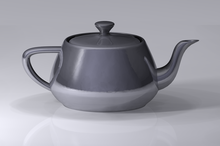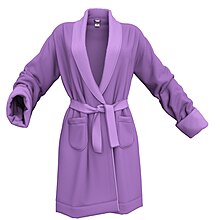3D modeling: Difference between revisions
Extended confirmed users 63,915 edits |
Fleshed out 3d printing list with another use |
||
| Line 65: | Line 65: | ||
3D printing is a form of additive manufacturing technology where a three dimensional object is created by laying down or build from successive layers of material. |
3D printing is a form of additive manufacturing technology where a three dimensional object is created by laying down or build from successive layers of material. |
||
In recent years, there has been an upsurge in the number of companies offering personalized 3D printed models of objects that have been scanned, designed in CAD software, and then printed to the customer's requirements. As previously mentioned, 3D models can be purchased from online marketplaces and printed by individuals or companies using commercially available 3D printers, enabling the home-production of objects such as spare parts,<ref>{{cite web|title=3D Printing Toys|url=http://www.businessinsider.com/3d-printing-toys-2014-8|website=Business Insider|accessdate=25 January 2015}}</ref> and even medical equipment.<ref>{{cite web|title=New Trends in 3D Printing – Customized Medical Devices|url=http://envisiontec.com/3d-printer-blog/trends-in-3d-printing-of-customized-medical-devices/|website=Envisiontec|accessdate=25 January 2015}}</ref> |
In recent years, there has been an upsurge in the number of companies offering personalized 3D printed models of objects that have been scanned, designed in CAD software, and then printed to the customer's requirements. As previously mentioned, 3D models can be purchased from online marketplaces and printed by individuals or companies using commercially available 3D printers, enabling the home-production of objects such as spare parts,<ref>{{cite web|title=3D Printing Toys|url=http://www.businessinsider.com/3d-printing-toys-2014-8|website=Business Insider|accessdate=25 January 2015}}</ref> mathematical models<ref>{{Cite web|url=http://reference.wolfram.com/language/ref/Printout3D.html|title=Printout3D—Wolfram Language Documentation|website=reference.wolfram.com|access-date=2016-08-06}}</ref>, and even medical equipment.<ref>{{cite web|title=New Trends in 3D Printing – Customized Medical Devices|url=http://envisiontec.com/3d-printer-blog/trends-in-3d-printing-of-customized-medical-devices/|website=Envisiontec|accessdate=25 January 2015}}</ref> |
||
==Human models== |
==Human models== |
||
Revision as of 15:15, 6 August 2016
This article needs additional citations for verification. (April 2010) |
| Three-dimensional (3D) computer graphics |
|---|
 |
| Fundamentals |
| Primary uses |
|
| Related topics |
In
Models may be created automatically or manually. The manual modeling process of preparing geometric data for 3D computer graphics is similar to
3D modeling software is a class of
Models
3D models represent a
3D models are widely used anywhere in
Today, 3D models are used in a wide variety of fields. The medical industry uses detailed models of organs; these may be created with multiple 2-D image slices from an MRI or CT scan. The movie industry uses them as characters and objects for animated and real-life
Representation

Almost all 3D models can be divided into two categories.
- Solid - These models define the volume of the object they represent (like a rock). These are more realistic, but more difficult to build. Solid models are mostly used for nonvisual simulations such as medical and engineering simulations, for CAD and specialized visual applications such as ray tracing and constructive solid geometry
- Shell/boundary - these models represent the surface, e.g. the boundary of the object, not its volume (like an infinitesimally thin eggshell). These are easier to work with than solid models. Almost all visual models used in games and film are shell models.
Because the appearance of an object depends largely on the exterior of the object,
The process of transforming representations of objects, such as the middle point coordinate of a
Modeling process
There are three popular ways to represent a model:
- Polygonal modeling - Points in 3D space, called vertices, are connected by line segments to form a polygon mesh. The vast majority of 3D models today are built as textured polygonal models, because they are flexible and because computers can render them so quickly. However, polygons are planar and can only approximate curved surfaces using many polygons.
- Curve modeling - Surfaces are defined by curves, which are influenced by weighted control points. The curve follows (but does not necessarily interpolate) the points. Increasing the weight for a point will pull the curve closer to that point. Curve types include nonuniform rational B-spline (NURBS), splines, patches, and geometric primitives
- Digital sculpting - Still a fairly new method of modeling, 3D sculpting has become very popular in the few years it has been around.[citation needed] There are currently three types of digital sculpting: Displacement, which is the most widely used among applications at this moment, uses a dense model (often generated by subdivision surfaces of a polygon control mesh) and stores new locations for the vertex positions through use of a 32bit image map that stores the adjusted locations. Volumetric, loosely based on voxels, has similar capabilities as displacement but does not suffer from polygon stretching when there are not enough polygons in a region to achieve a deformation. Dynamic tessellation is similar to voxel but divides the surface using triangulation to maintain a smooth surface and allow finer details. These methods allow for very artistic exploration as the model will have a new topology created over it once the models form and possibly details have been sculpted. The new mesh will usually have the original high resolution mesh information transferred into displacement data or normal map data if for a game engine.
The modeling stage consists of shaping individual objects that are later used in the scene. There are a number of modeling techniques, including:
Modeling can be performed by means of a dedicated program (e.g.,
Complex materials such as blowing sand, clouds, and liquid sprays are modeled with
Compared to 2D methods
3D
Advantages of wireframe 3D modeling over exclusively 2D methods include:
- Flexibility, ability to change angles or animate images with quicker rendering of the changes;
- Ease of rendering, automatic calculation and rendering photorealistic effects rather than mentally visualizing or estimating;
- Accurate photorealism, less chance of human error in misplacing, overdoing, or forgetting to include a visual effect.
Disadvantages compare to 2D photorealistic rendering may include a software learning curve and difficulty achieving certain photorealistic effects. Some photorealistic effects may be achieved with special rendering filters included in the 3D modeling software. For the best of both worlds, some artists use a combination of 3D modeling followed by editing the 2D computer-rendered images from the 3D model.
3D model market
A large market for 3D models (as well as 3D-related content, such as textures, scripts, etc.) still exists - either for individual models or large collections. Online marketplaces for 3D content, such as
Over the last several years numerous marketplaces specialized in 3D printing models have emerged. Some of the 3D printing marketplaces are combination of models sharing sites, with or without a built in e-com capability. Some of those platforms also offer 3D printing services on demand, software for model rendering and dynamic viewing of items, etc. Among the most popular 3D printing file sharing platforms are Shapeways, Pinshape, Thingiverse, 3DExport, CGTrader, Treatstock, Threeding, MyMiniFactory and GrabCAD.
3D printing
3D printing is a form of additive manufacturing technology where a three dimensional object is created by laying down or build from successive layers of material.
In recent years, there has been an upsurge in the number of companies offering personalized 3D printed models of objects that have been scanned, designed in CAD software, and then printed to the customer's requirements. As previously mentioned, 3D models can be purchased from online marketplaces and printed by individuals or companies using commercially available 3D printers, enabling the home-production of objects such as spare parts,[5] mathematical models[6], and even medical equipment.[7]
Human models
The first widely available commercial application of human virtual models appeared in 1998 on the Lands' End web site. The human virtual models were created by the company My Virtual Mode Inc. and enabled users to create a model of themselves and try on 3D clothing.[8] There are several modern programs that allow for the creation of virtual human models (Poser being one example).
3D Clothing

The development of cloth simulation software such as Marvelous Designer, CLO3D and Optitex, has enabled artists and fashion designers to model dynamic 3D clothing on the computer. [9]
Dynamic 3D clothing is used for virtual fashion catalogs, as well as for dressing 3D characters for video games, 3D animation movies, for digital doubles in movies
Uses

3D modeling is used in various industries like films, animation and gaming,
3D modelling is also used in the field of
See also
- 3CT
- List of 3D modeling software
- List of common 3D test models
- 3D computer graphics software
- 3D printing
- 3D scanner
- Additive Manufacturing File Format
- Building information modeling
- Cloth modeling
- Computer facial animation
- Digimation's Library example
- Digital geometry
- Edge loop
- Evolver is a portal, 3D modeler and market place for 3D characters
- Geological modeling
- Industrial CT scanning
- Marching cubes
- Open CASCADE
- Polygon mesh
- Polygonal modeling
- Scaling (geometry)
- SIGGRAPH
- Stanford Bunny
- Triangle mesh
- Utah teapot
- Voxel
- B-rep
References
- ^ http://www.fractal.ae/3d-modelling-services/
- ^ "ERIS Project Starts". ESO Announcement. Retrieved 14 June 2013.
- ^ "3D Scanning Advancements in Medical Science". Konica Minolta. Retrieved 24 October 2011.
- ^ Jon Radoff, Anatomy of an MMORPG, August 22, 2008
- ^ "3D Printing Toys". Business Insider. Retrieved 25 January 2015.
- ^ "Printout3D—Wolfram Language Documentation". reference.wolfram.com. Retrieved 2016-08-06.
- ^ "New Trends in 3D Printing – Customized Medical Devices". Envisiontec. Retrieved 25 January 2015.
- ^ "Lands' End First With New 'My Virtual Model' Technology: Takes Guesswork Out of Web Shopping for Clothes That Fit". PRNewswire. Lands' End. February 12, 2004. Retrieved 2013-11-24.
- ^ "All About Virtual Fashion and the Creation of 3D Clothing". CGElves. Retrieved 25 December 2015.
- ^ "3D Clothes made for The Hobbit using Marvelous Designer". 3DArtist. Retrieved 9 May 2013.
External links
- How 3D Works - Explains 3D modeling for an illuminated manuscript
- How to Build Your First 3D Object - Tutorial which explains how to model your objects for print
- Manuscripts of Lichfield Cathedral - Includes interactive 3D renderings of 16 pages of the St Chad Gospels (high resolution)
- Stark, John (1984), Experience with the development and use of a CAD/CAM system, Elsevier,
